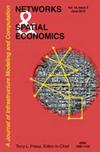向东的荆棘之路:通往死胡同的突破
IF 1.5
3区 工程技术
Q3 OPERATIONS RESEARCH & MANAGEMENT SCIENCE
引用次数: 0
摘要
苏联和随后的俄罗斯远东地区的长期发展表明了一种惊人的模式,即对该地区社会经济发展的可能性反复出现乐观和悲观的时期,这种模式与该地区本身的工具和目标以及国家政治和经济制度在这一领域的努力的定期重复一样引人注目。过去的十年已经过去,并且仍在过去,这标志着国家为该地区的发展而进行的监管努力进入了一个新阶段。总结成果和确定这方面进一步努力的范围和结构的下一阶段是在符拉迪沃斯托克举行的下一届第七届东方经济论坛。人们得出的结论是,正如在论坛上再次表明的那样,尽管作出了巨大的行政努力,进行了有力的体制改革,并调动了公共财政,但在近10年来,在改变远东的生活质量和经济方面未能取得显著的成果。事实表明,只有在克服了基本限制之后,才有可能改变正确目标设定的资源提供领域的情况,这些限制主要包括已经提到的监管对象的领土规模问题,以及认识到需要从增长管理向质量变化管理进行思想转变本文章由计算机程序翻译,如有差异,请以英文原文为准。
The Thorny Path Eastwards: Breakthroughs Which Turn Into Dead-End
The long period of the development of the Soviet and then the Russian Far East has demonstrated a striking pattern of repetitive periods of optimism and pessimism about the possibility of socio-economic development of the region, a pattern as striking as the regular repetition of tools and goals, efforts of the region itself and the national political and economic system in this field. The last decade has passed and is still passing under the sign of a new stage of state regulatory efforts for the development of the region. The next stage in summing up the results and determining the scope and structure of further efforts in this direction was the next VII Eastern Economic Forum in Vladivostok. It has been concluded that, as demonstrated once again at the forum, despite enormous administrative efforts, vigorous institutional reform, and mobilization of public finances, it has not been possible to achieve noticeable results in the field of transforming the quality of life and economy in the Far East for almost 10 years. It has been shown that it is possible to change the situation in the field of resource provision of correct goal-setting only after overcoming fundamental limitations, which primarily include the already mentioned problem of the territorial scale of the object of regulation and the recognition of the need for an ideological transition from growth management to quality change management
求助全文
通过发布文献求助,成功后即可免费获取论文全文。
去求助
来源期刊

Networks & Spatial Economics
社会科学-运筹学与管理科学
CiteScore
4.00
自引率
4.20%
发文量
26
审稿时长
>12 weeks
期刊介绍:
Networks and Spatial Economics (NETS) is devoted to the mathematical and numerical study of economic activities facilitated by human infrastructure, broadly defined to include technologies pertinent to information, telecommunications, the Internet, transportation, energy storage and transmission, and water resources. Because the spatial organization of infrastructure most generally takes the form of networks, the journal encourages submissions that employ a network perspective. However, non-network continuum models are also recognized as an important tradition that has provided great insight into spatial economic phenomena; consequently, the journal welcomes with equal enthusiasm submissions based on continuum models.
The journal welcomes the full spectrum of high quality work in networks and spatial economics including theoretical studies, case studies and algorithmic investigations, as well as manuscripts that combine these aspects. Although not devoted exclusively to theoretical studies, the journal is "theory-friendly". That is, well thought out theoretical analyses of important network and spatial economic problems will be considered without bias even if they do not include case studies or numerical examples.
 求助内容:
求助内容: 应助结果提醒方式:
应助结果提醒方式:


